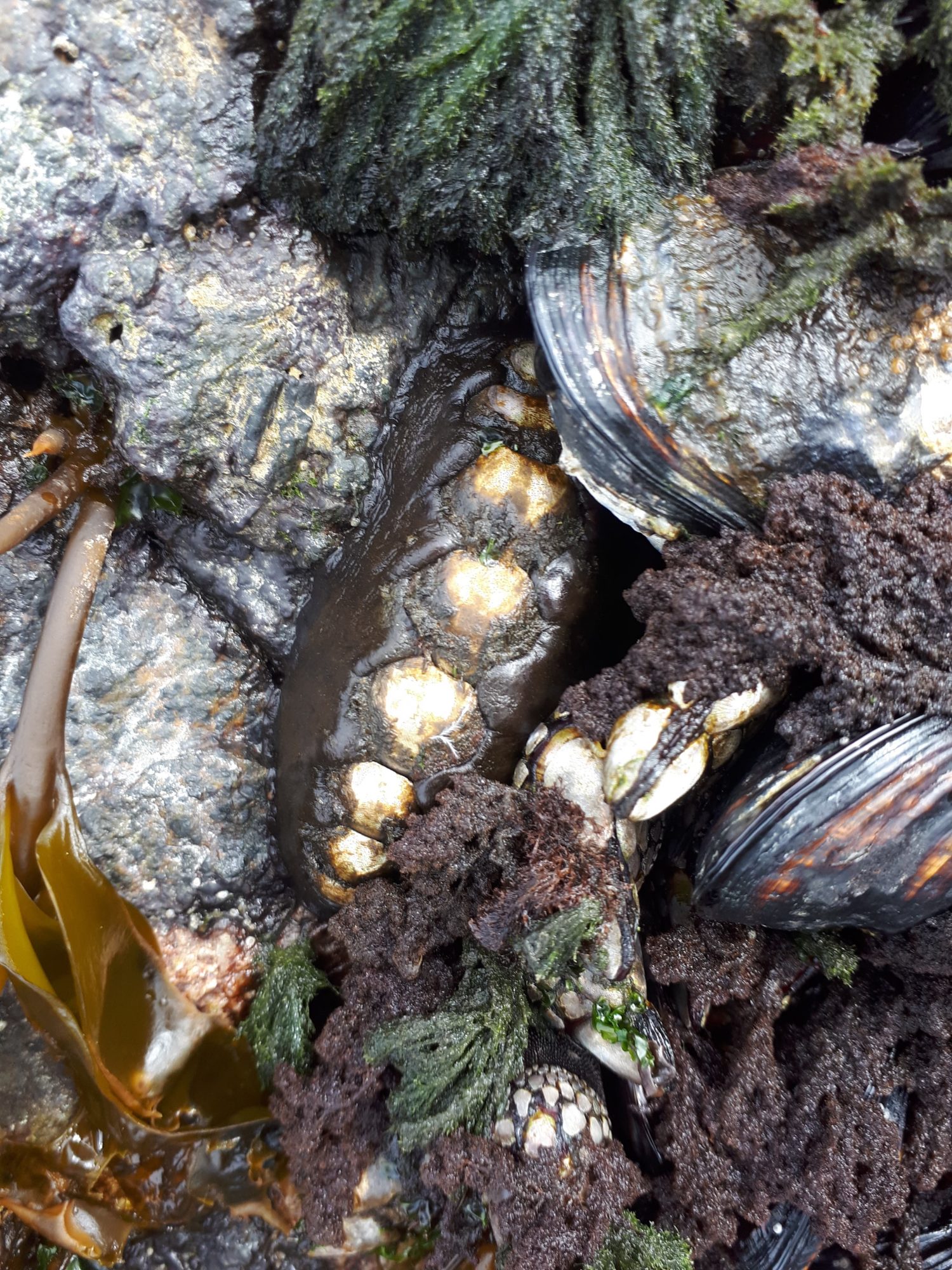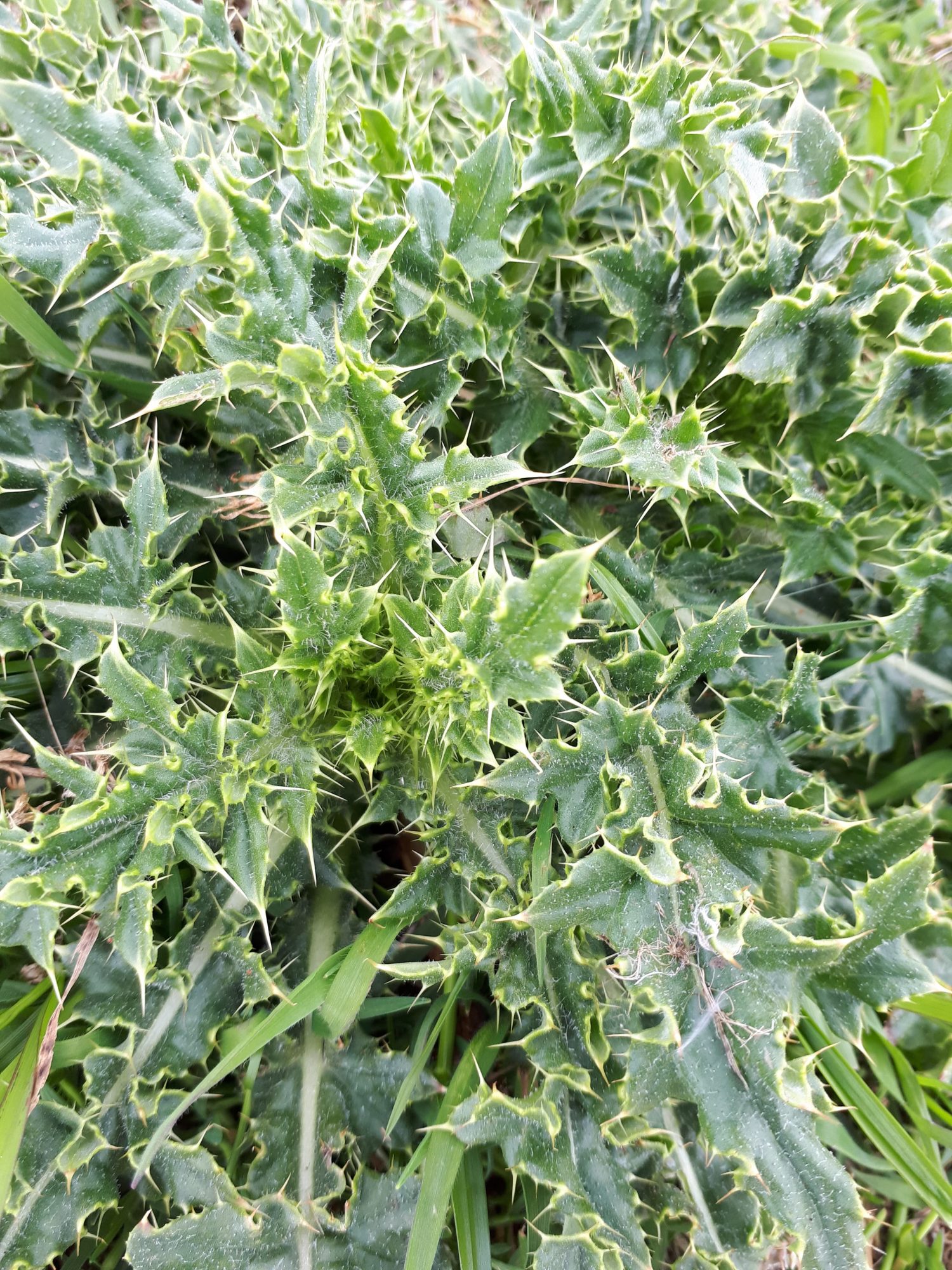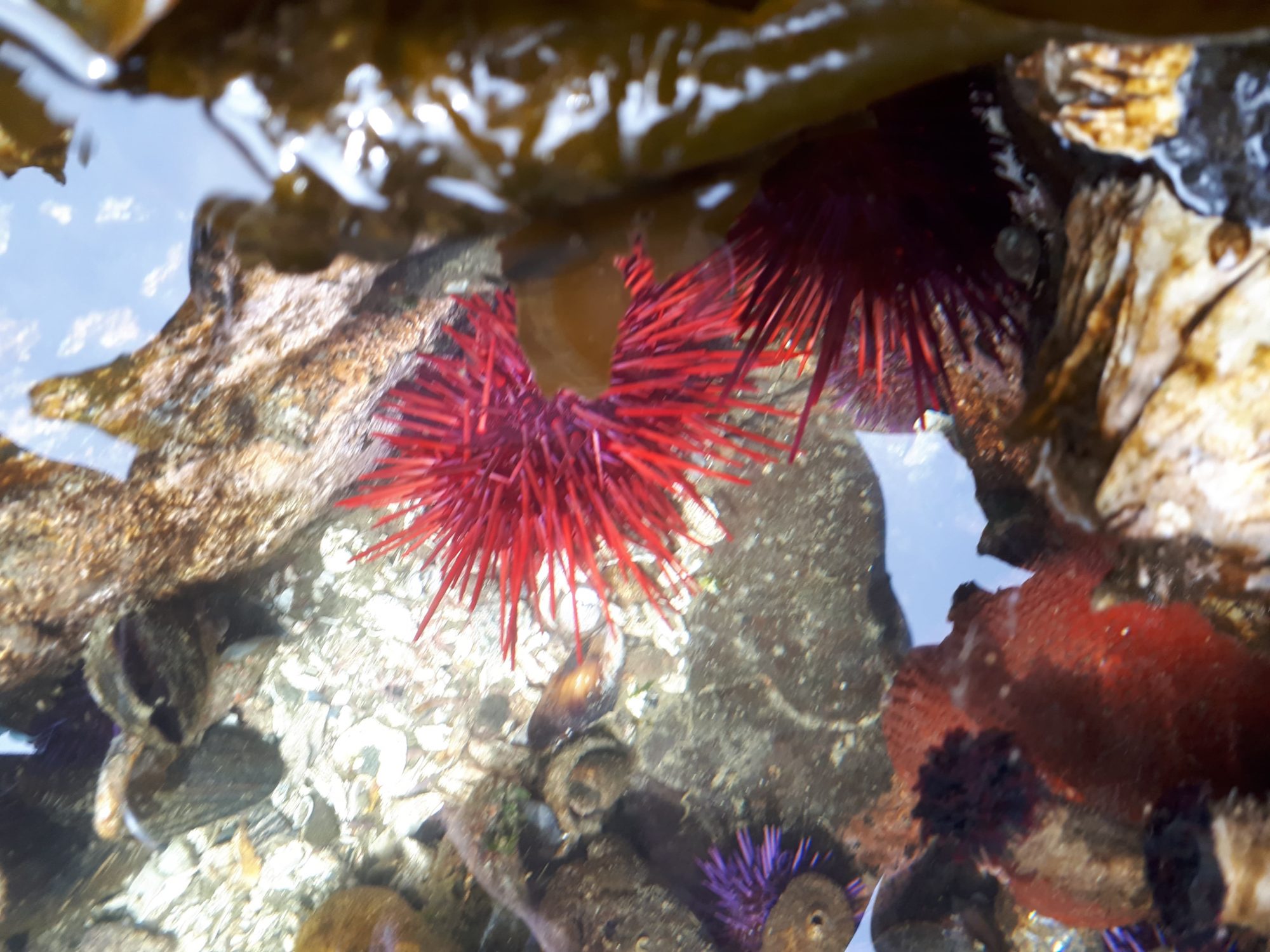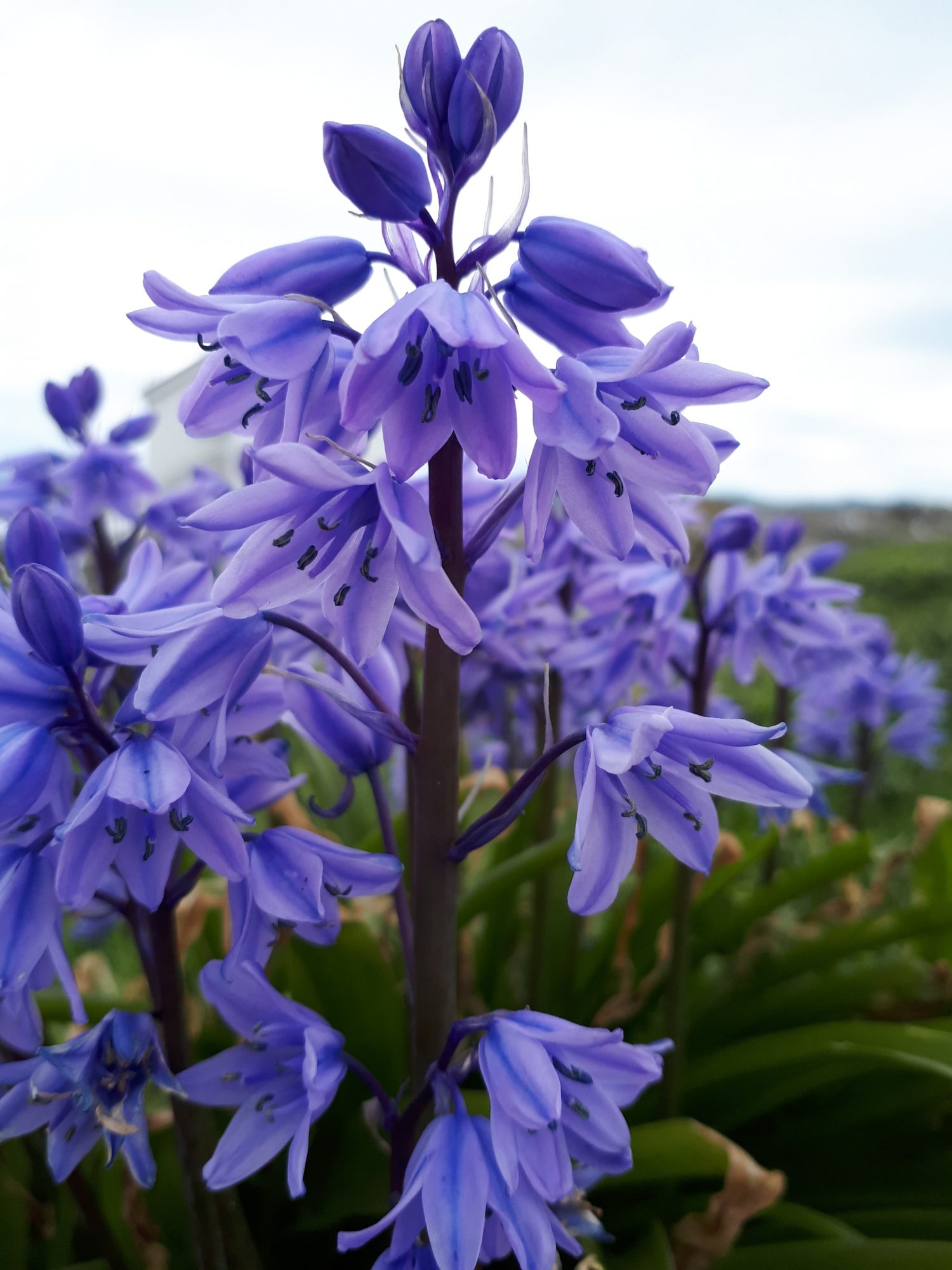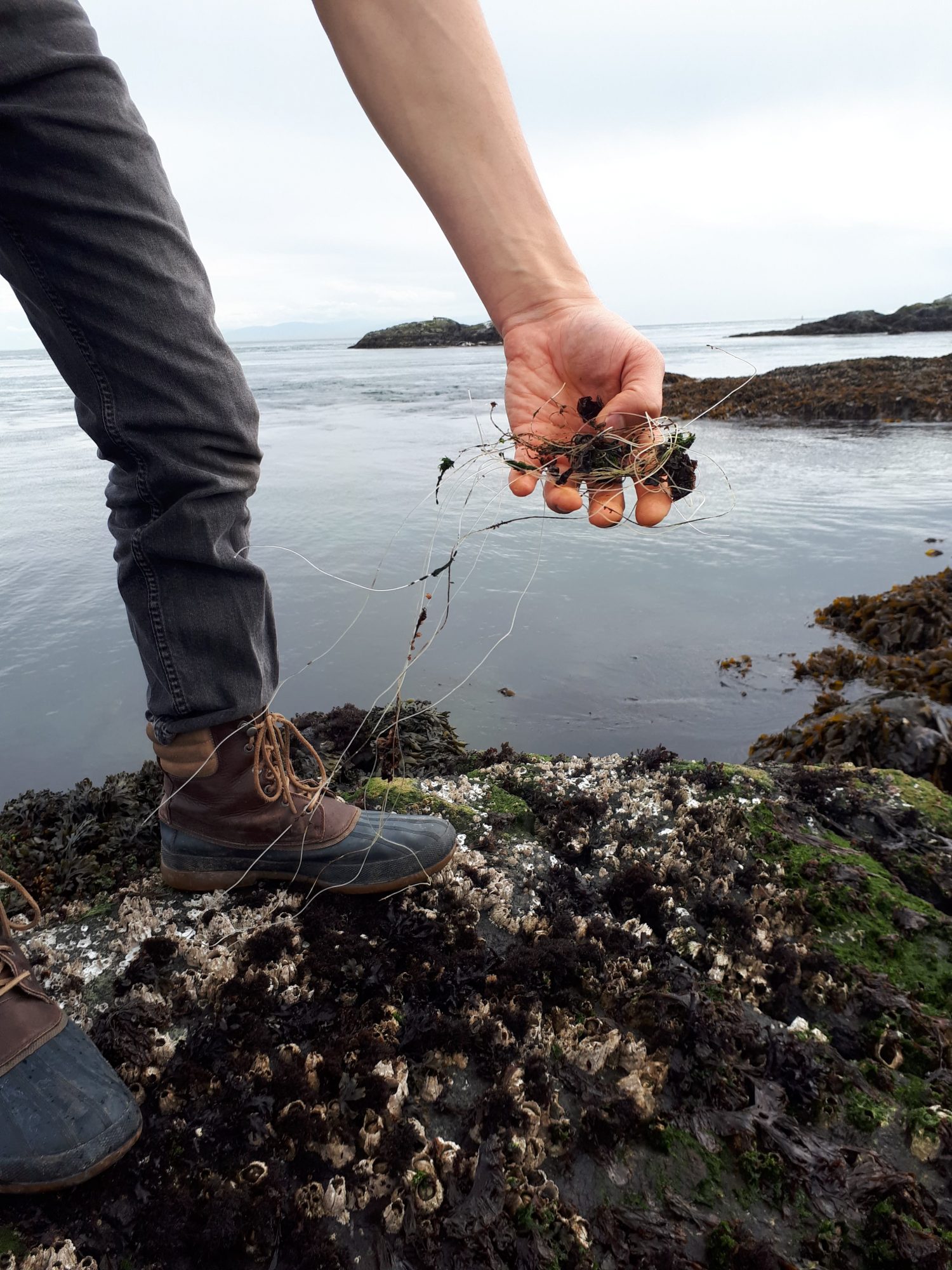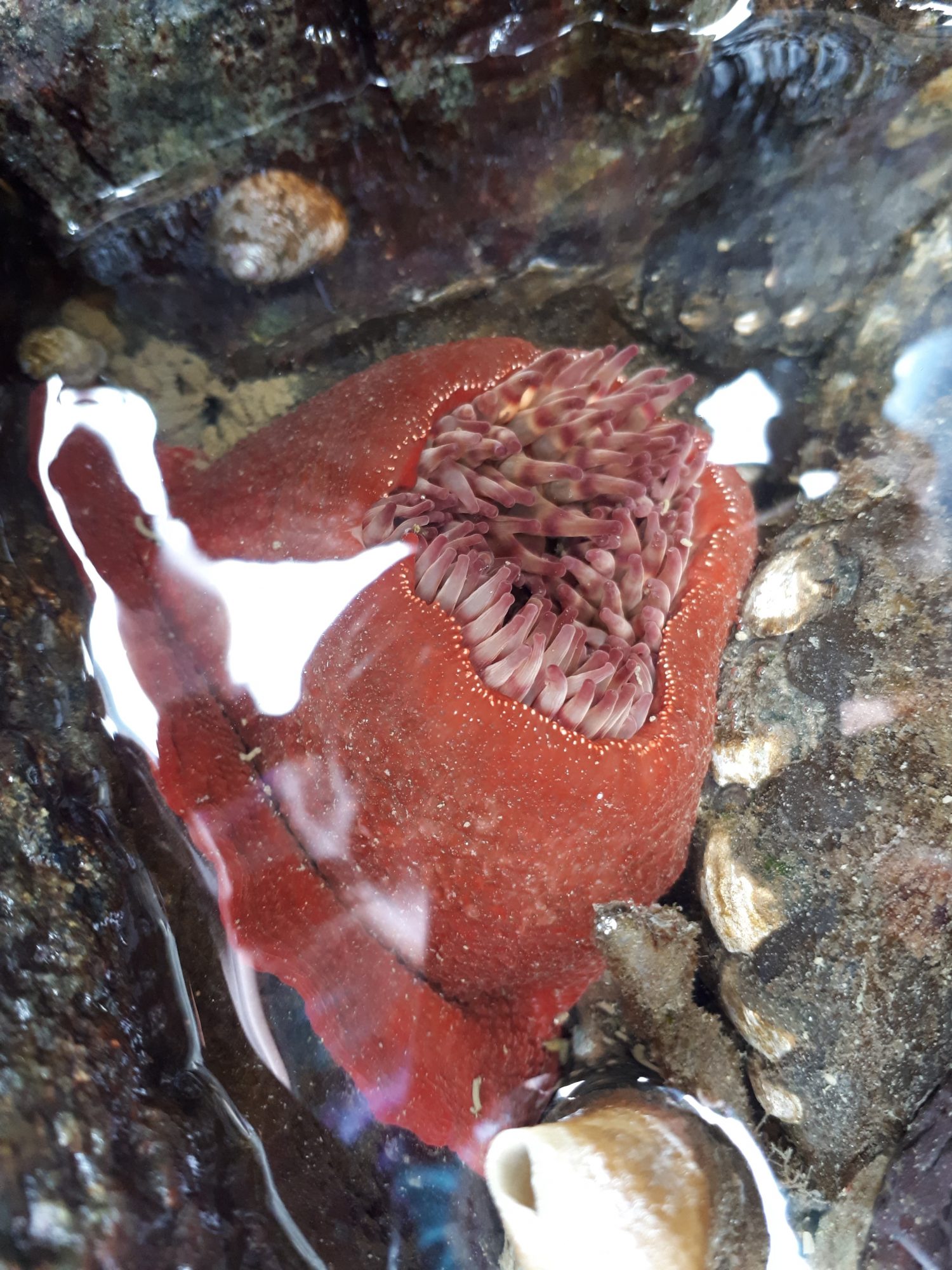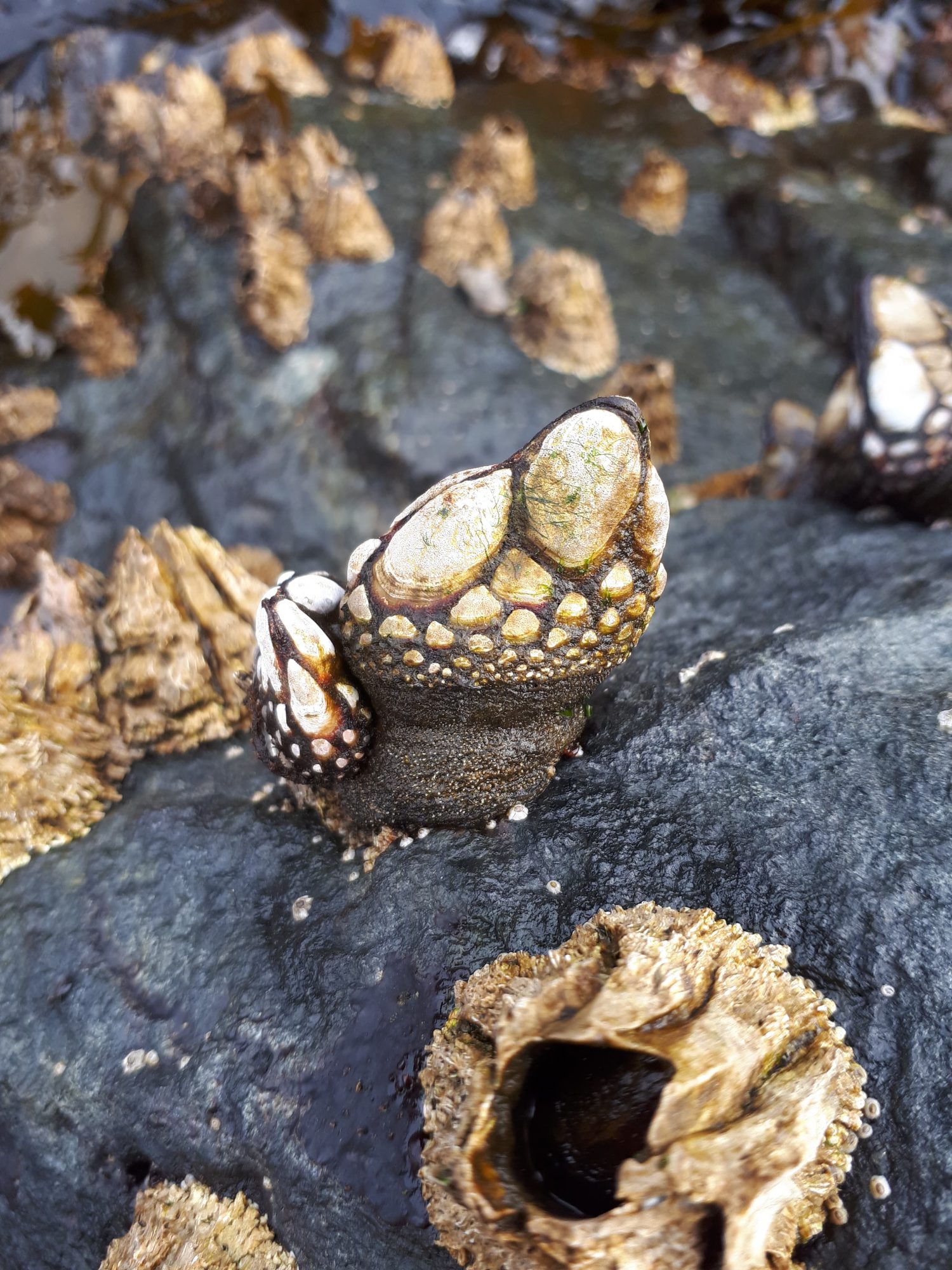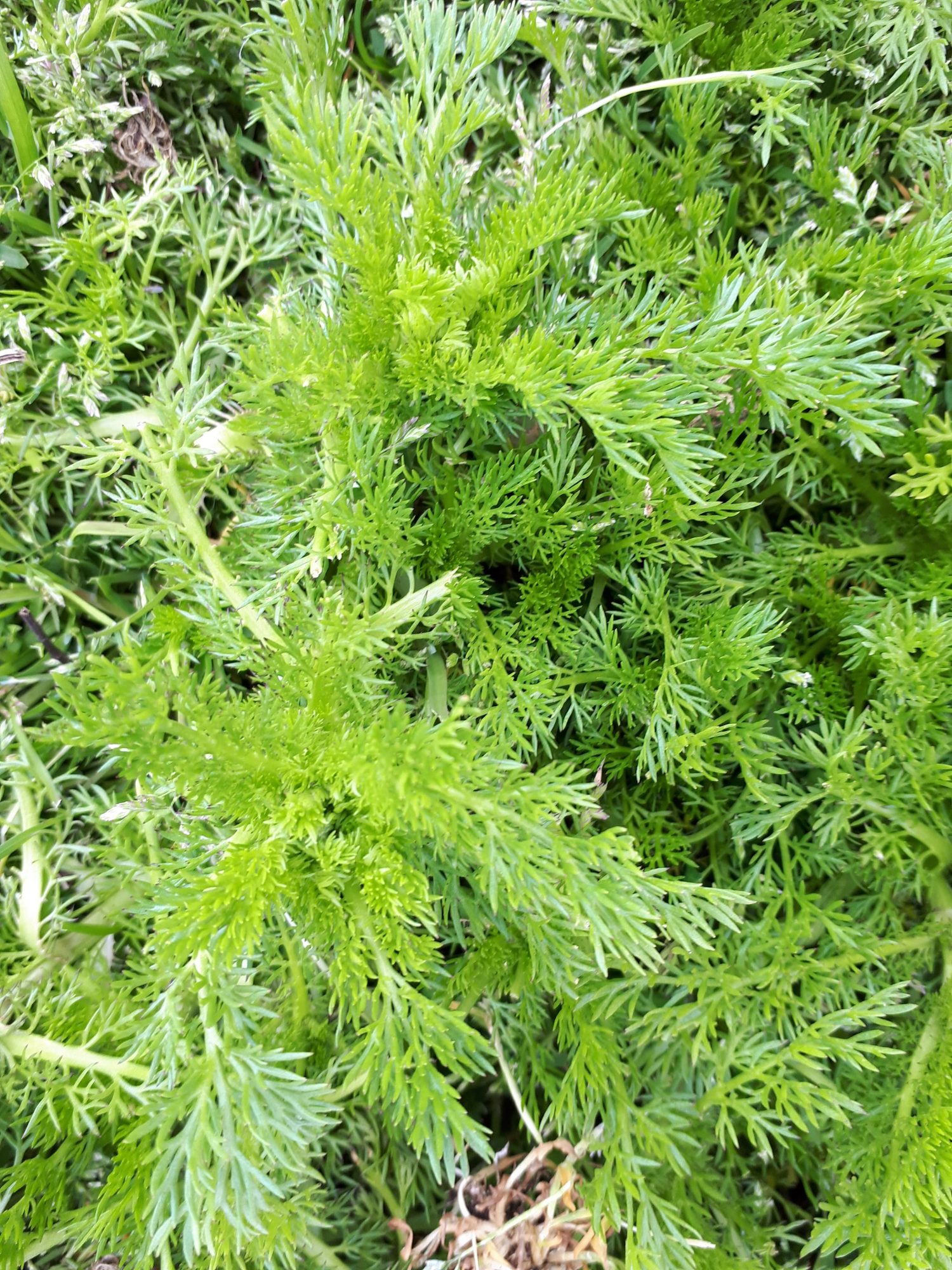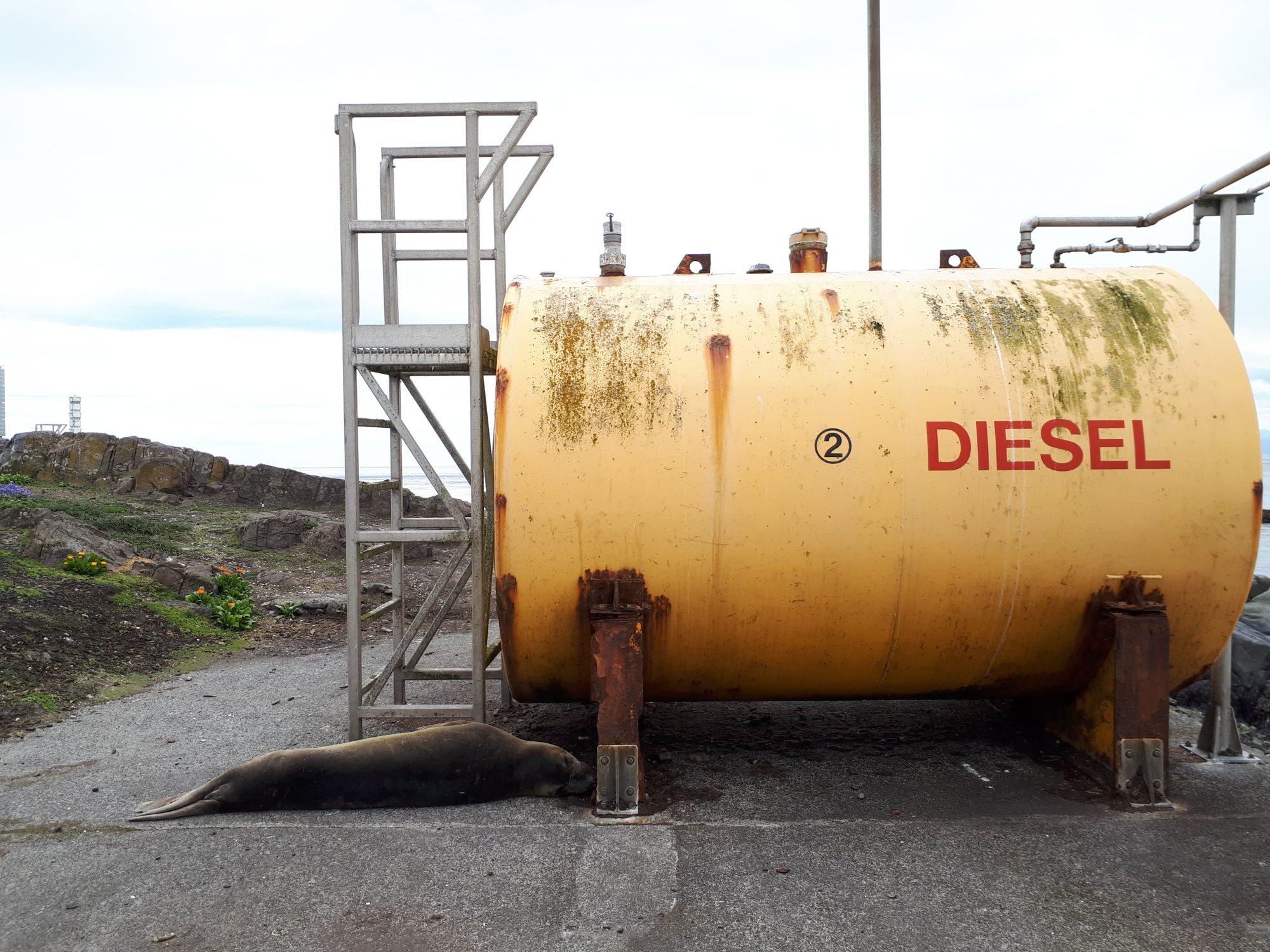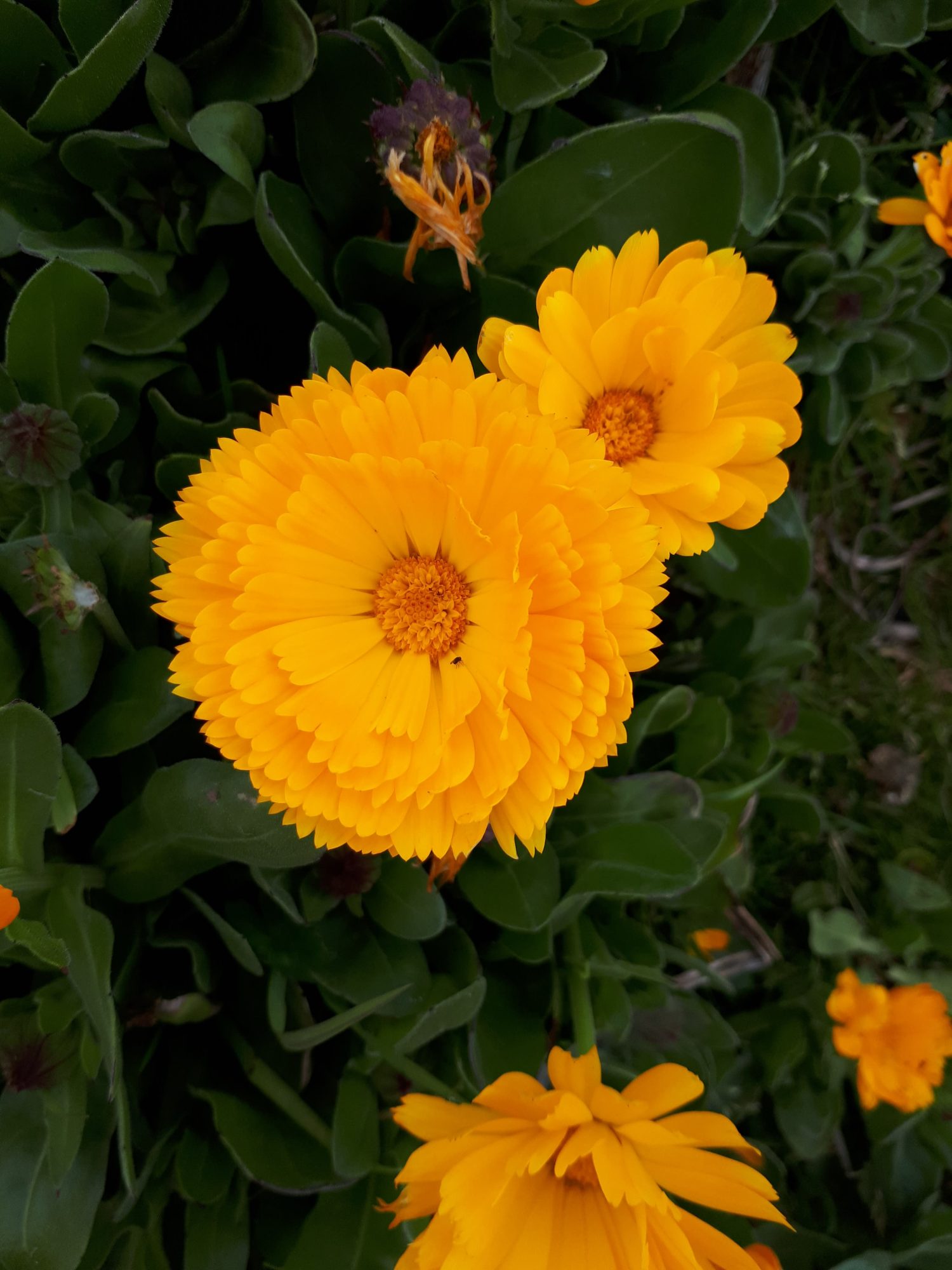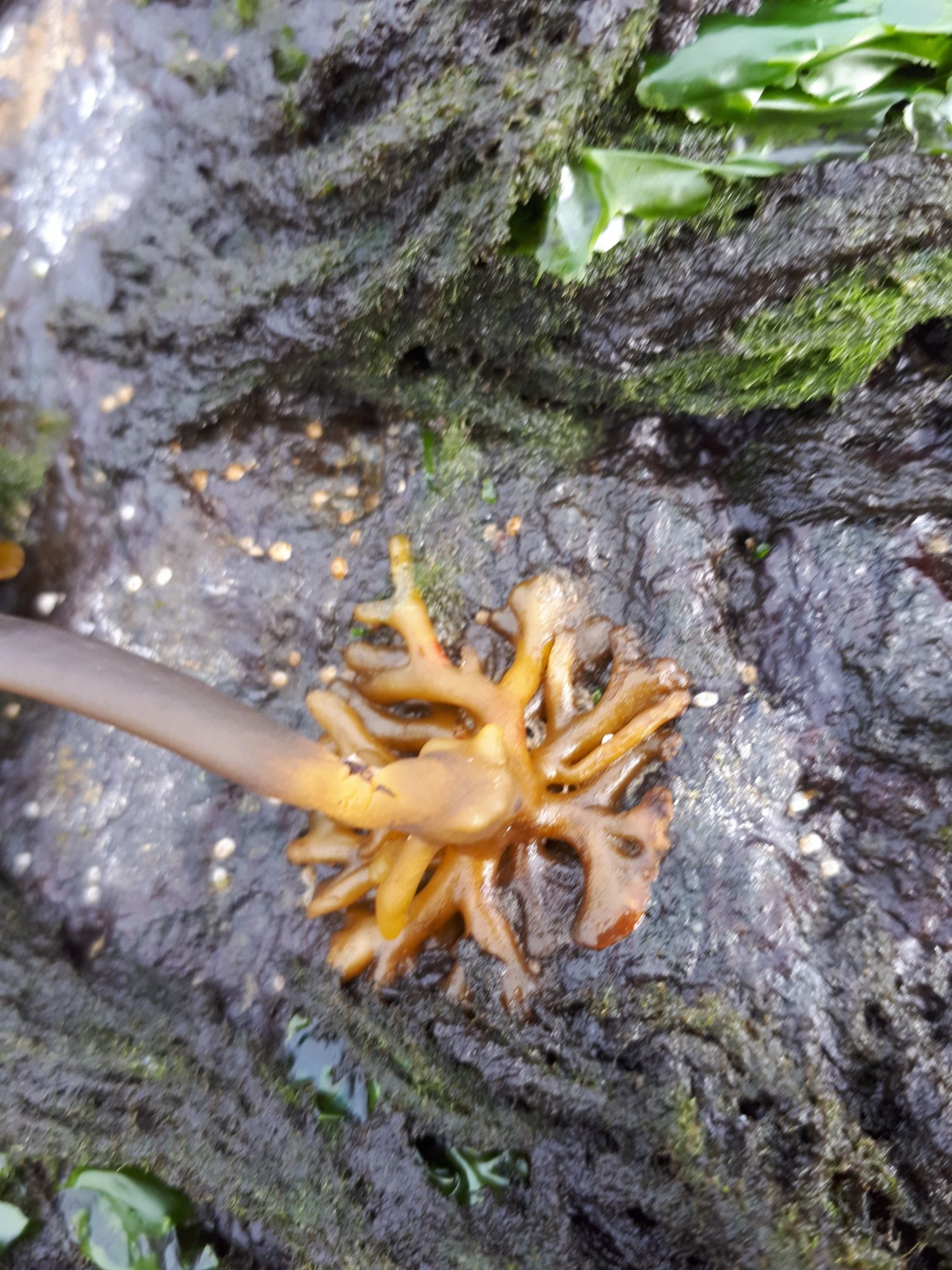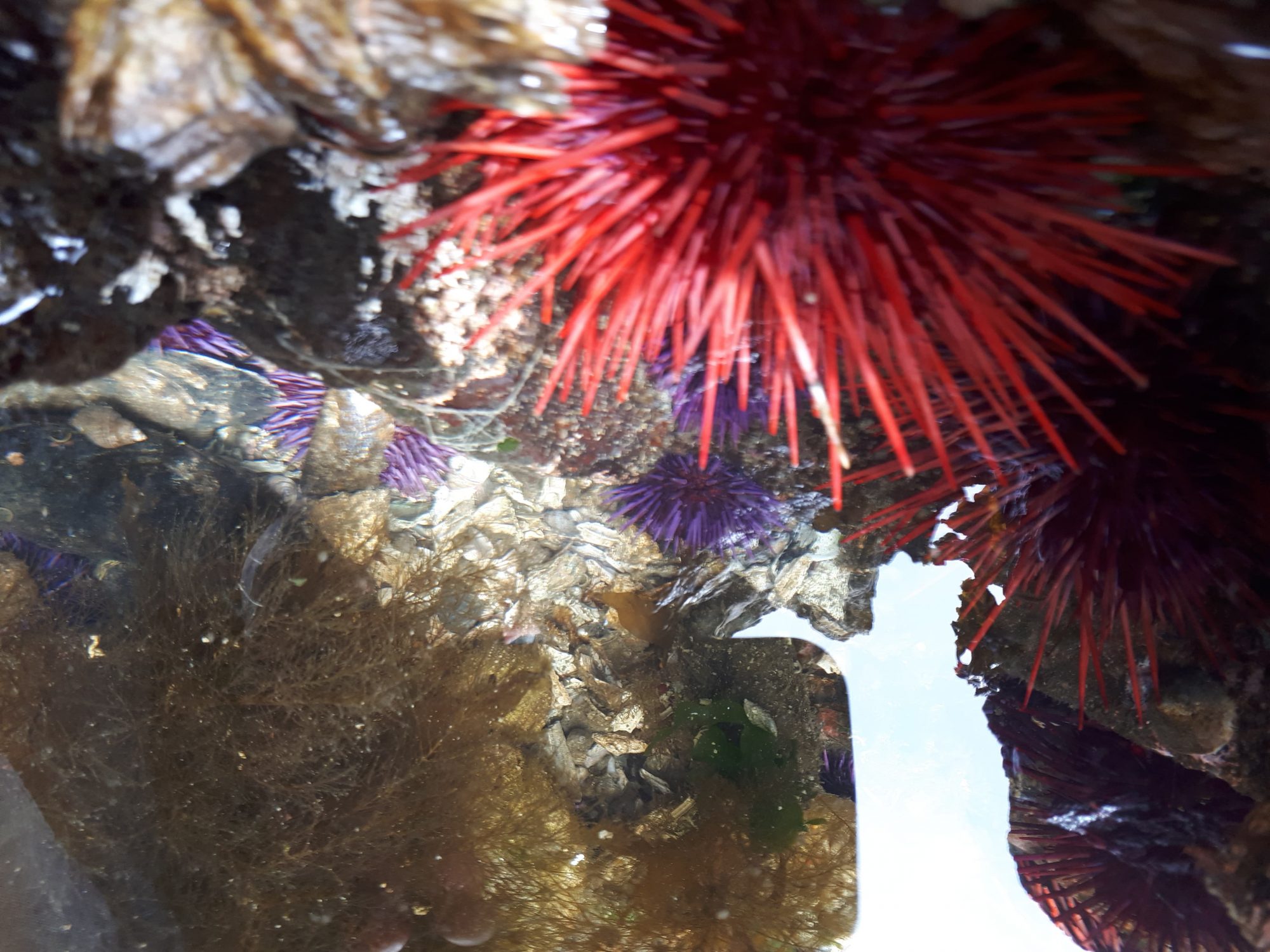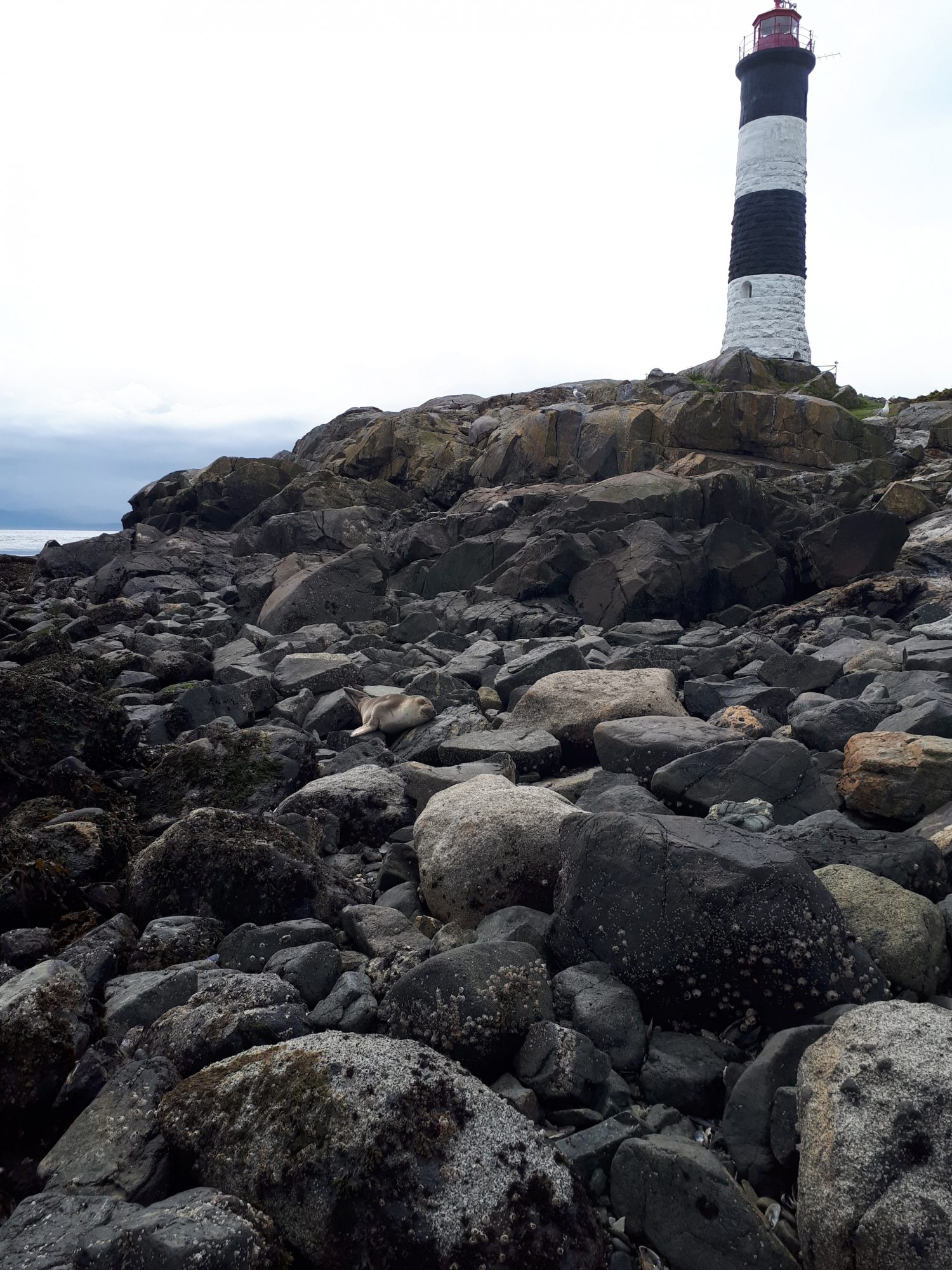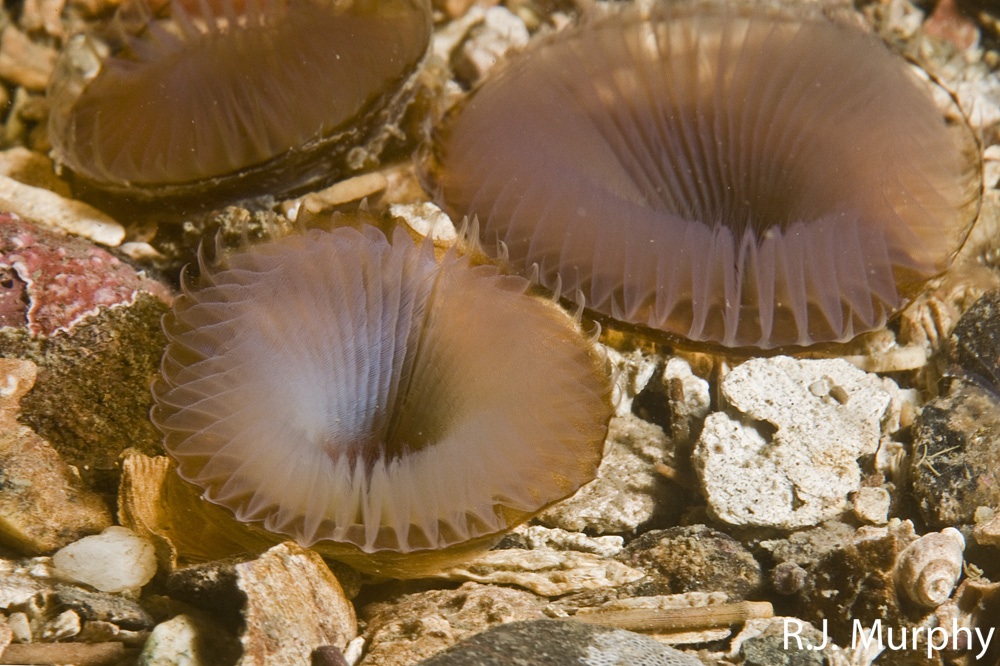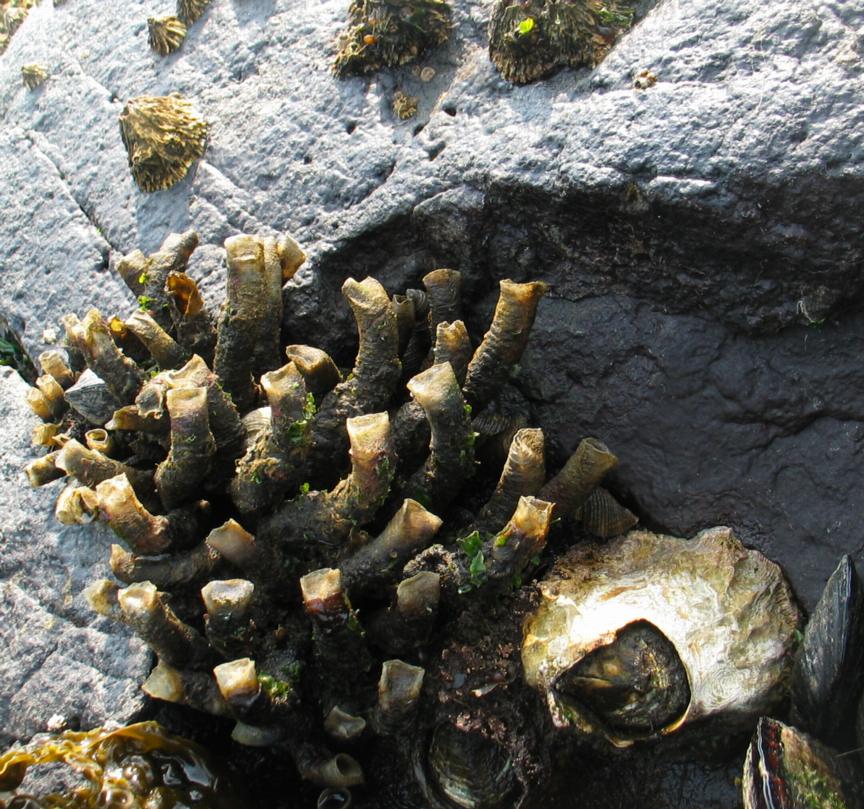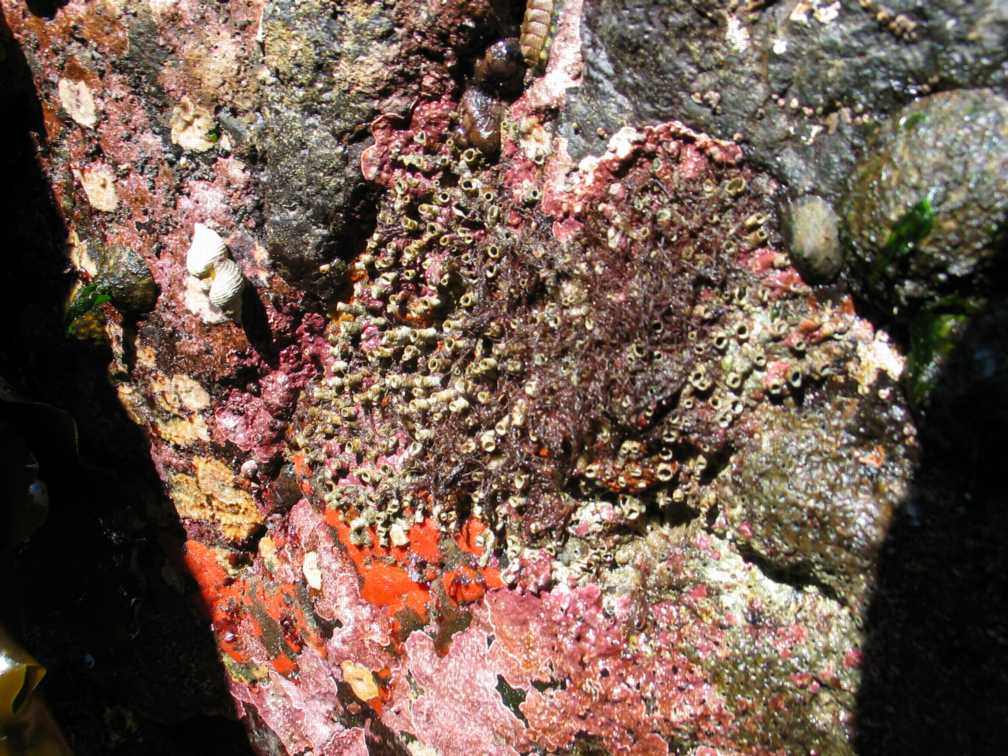
This patch of calcareous-tubed serpulid worms is exposed on the north east corner of Great Race Rock in a crevasse at low tide. Many other invertebrate species are associated with it in this picture.
Domain Eukarya
Kingdom Animalia
Phylum Annelida
Class Polychaeta
Order Sabellida
Family Serpulidae
Subfamily Serpulinae
Genus Serpula
Species vermicularis
Linnaeus,1767
Common Name: Calcareous tubeworm
Serpula vermicularis is a slender, tube-dwelling polychaete between 5 and 7 cm length with about 200 segments. The tubes are cylindrical with occasional rings and irregular lengthwise ridges cut into blunt teeth. The operculum is calcareous and funnel shaped with radial grooves and a serrated circumference.
The color of the body of the worm varies from pale yellow to brick red. The tube is pinkish-white and the operculum is patterned with red and white rays.
Size: up to 7cm
Growth form: vermiform segmented
Distribution
These are common at Race Rocks in the subtidal area. They are often seen by divers as small bright red spots which seem to disappear when approached. Their gills withdraw rapidly into the white calcareous tube.
These worms are commonly found throughout north-west and south-west coasts of England and are distributed in the north-east Atlantic and the Mediterranean.
Physiographic preferences: open coast, offshore seabed, estuary
The calcareous tubes of Serpula vermicularis can be found attached to hard substrates such as rocks, stones, bivalve shells and ship hulls from low water to the sublittoral in depths up to 250 m. In some very sheltered areas the tubes aggregate together to form small reefs. Often a mass of coiled white tubes shows up on the shore after a storm attached to the holdfasts of kelp .
Type: Gonochoristic
Frequency: annual episodic
Development mechanism: Planktotrophic
Life span: 2-5 years
An interesting feeding method, kleptoparasitism, of the larva is documented inresearch:
Martina Naschberger

